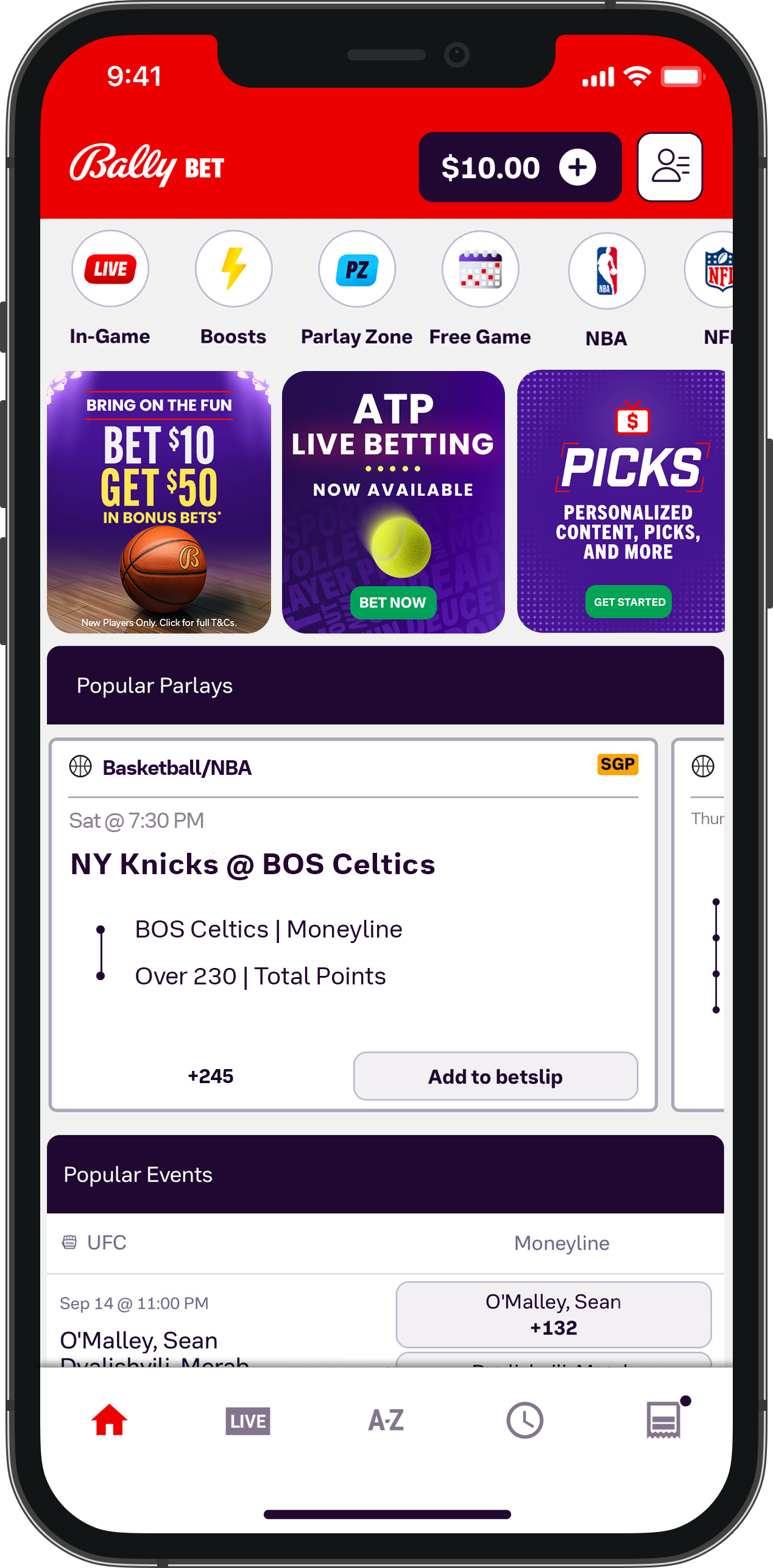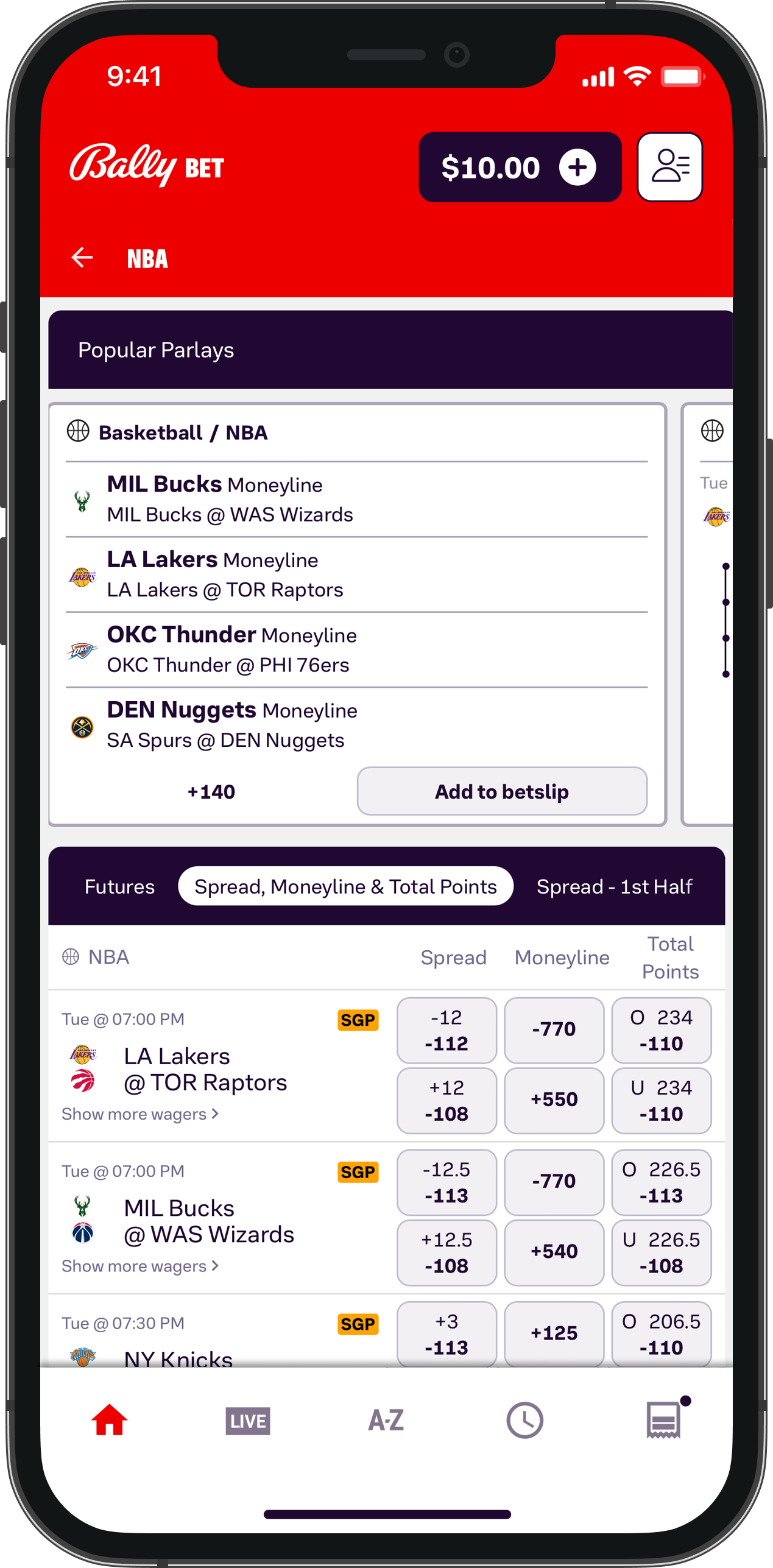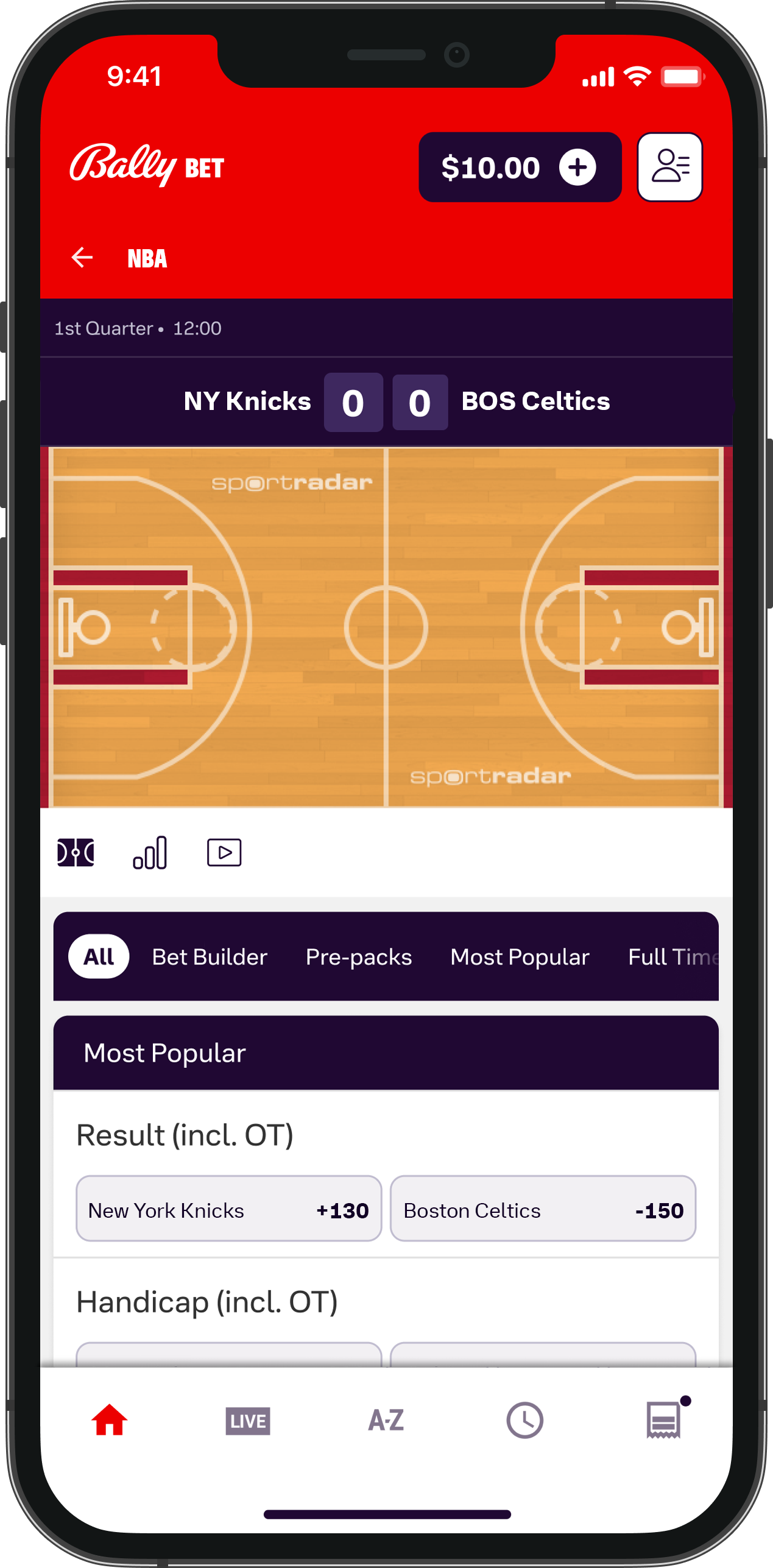Football Betting at Bally Bet Sportsbook
Football is the most popular sport in the United States, with 72% of Americans professing their love for the game. The sport has a long history going all the way back to November 6, 1869, when Rutgers and Princeton played the first-ever game.
There's college football, which features elite universities battling against each other, and the NFL, which is the top professional league where players earn hundreds of millions of dollars. College football is known for its passion and intense rivalries, while the NFL is famous for its players' exceptional displays of athleticism and the world-renowned Super Bowl, which is watched by over 120 million people.
At Bally Bet, you can bet on all college and NFL games throughout the regular season and playoffs.
But before that, why not take a look at our helpful football betting guide? We'll break down the odds and betting markets, explore and explain different football betting strategies, and make clear exactly how to bet on football.
How to Read Football Betting Odds
Understanding football betting markets is easier than you think.
The team with negative odds (-) is the favorite, while the team with positive odds (+) is considered the underdog.
The greater the odds, the bigger your potential payout, but the less chance you have of winning. The great thing about football betting, however, is that favorites lose all the time — and heavy underdogs mount impossible comebacks almost weekly.
Apart from identifying the favorite and the underdog, football odds reveal your potential winnings. Calculating your potential winnings is straightforward enough: If the odds on the moneyline are +200 for the Eagles to beat the Cowboys and the bet lands, it means that you'd win $200 for every $100 you stake. Your total payout would be $300 because you'd get your $100 stake back.
If you’re betting on a team with the favorite, then the odds reveal how much you have to bet to win $100 in profit. Let’s say you bet on the Ravens to beat the Titans at -200. You would have to bet $200 to earn $100 profit.
Football odds can also show your chances of winning. This is known as implied probability. To calculate implied probability, you first need to convert American odds to decimal odds. You then divide one (1) by the decimal odds. The result is your likelihood of winning according to the sportsbook.
Let's say you want to bet on the 49ers to beat the Rams at -200. You'd convert -200 to decimal odds ((100/200) + 1), which gives you 1.5.
Then, divide 1 by 1.5, and you get 66.66%.
Here, the sportsbook expects the 49ers to beat the Rams 66.66% of the time. If you think it’s likely that the 49ers will do this, then you might want to take the bet.
Popular Football Bets
Football betting has evolved to be more than just predicting which team is going to win. You can now bet on all aspects of the game. Here are some of the most popular football bets around today:
Moneyline
With a moneyline bet, you’re simply predicting the outcome of a game. With a two-way market, you bet on Team A or Team B to win, and if it’s a tie, then the bet is a push, and you receive your money back. With a three-way line, you can also bet on a tie, and there is no push.
Spread
With football spread betting, you need to predict which team is going to win while factoring in the point handicap placed on the team. If you bet on the Cowboys at -5.5, that means your bet only pays out if the Cowboys win by six points or more. A standard isn’t going to cut it!
Totals
With a totals bet, you’re not too concerned about the result of the game, only how many points are scored. You need to guess whether the combined number of points scored in the game will be greater (over) or less (under) than the line the sportsbook sets.
Let’s say the Bills are playing the Jets, and the line is 44.5. If you take the under and 44 points or less are scored, your bet wins.
But there are plenty of other football wagers beyond these ones. Check out some other ways to make your bet slip sing.
Parlays
You can take a parlay bet for a spin and combine multiple wagers onto one bet. Tread carefully with these, though — if just one of your predictions is wrong, none of your wagers will pay out.
Teasers
There’s also a special kind of parlay known as a teaser. These bets work by letting you adjust the spread by increasing or decreasing the number of points. This can improve your odds of winning, but in exchange, you have to combine multiple games into a parlay.
Some of the other football betting markets you might want to check out include props and futures.
Props
Prop bets are the kind that don't really have much bearing on the final outcome of a game, and are more to do with an event happening (or not happening, as the case may be).
When it comes to placing prop bets in football, you can bet on virtually everything like the first player to score a touchdown, whether your favorite quarterback will throw over 300 yards, and even the outcome of the pre-match coin toss. Prop bets guarantee that no football game is ever dull, and that even if your team might lose, you can still win.
Futures
With a futures bet, you're betting on the outcome of a long-term event, which typically involves multiple stages.
Some popular examples of futures bets include which player will win the MVP award, which teams will make the playoffs, and which team will win the Super Bowl — and you can place a wager on this at any point during the season, but keep in mind that the odds will change, too.
Live Football Betting
Live betting is also very popular, and we have it here at Bally Bet. As you'd expect, these bets are the kind you'd make while a football game is being played, as opposed to classic pregame betting.
Football Betting Advice & Tips
While always betting on your favorite team might be tempting, it’s unlikely to be a long-term winning approach. To increase your odds of picking winners, consider incorporating some of these football betting tips into your strategy:
Bet on home underdogs who lost their previous game
This strategy takes advantage of the reversion to the mean concept. Essentially, a team that has been playing badly recently isn’t as bad as it seems, and their form will naturally rebound. The public often overreacts and is convinced the team will keep losing, but underdogs are most likely to bounce back in front of their home crowd.
Don’t ignore the weather
A team can go from hero to zero, and vice versa, when the weather changes. A team reliant on precision passing to generate offense is really going to struggle in the snow or when it's raining. On the other hand, a team with a strong running game should thrive in these conditions.
Always calculate your implied probability
Many new bettors don’t actually know what they’re betting on. Whenever you make a betting decision, you need to consider the odds you’re receiving. Even if you don't think an underdog is going to win, the odds can make it worth a wager.
Want to learn how to read odds like a pro? Check out our Betting Odds Explained article.
Fading the public
This strategy involves looking at betting trends, waiting until the odds move, and then betting against the public. If 75% of the public starts backing the Ravens against the Dolphins and the sportsbooks start increasing the odds on Miami, you might be able to swoop in and get a great price on them.
Bet against East Coast teams when they play West Coast teams
Home-field advantage is often overrated in the NFL, but there are exceptions. When East Coast teams have to travel across the whole country and deal with a three-hour time difference, they can struggle to perform. There is a reason why the Seattle Seahawks have such a strong home record!
Betting on College Football
You aren’t just limited to the NFL when it comes to football betting. With extensive college football betting markets, you can enjoy moneyline, spread, and totals for hundreds of NCAA games throughout the season, including all bowl games.
Due to certain legal restrictions, certain markets like player props are unavailable, and in some regions, you can’t bet on in-state teams. It's always a good idea to check the rules for your state to see whether you can bet on college football and what markets are available to you.
In spread betting, a -1 in football betting means that the sportsbook expects this team to win by one point. If you bet on this team to win, they'll need to win by two points or more for your bet to pay out.
In 3-way betting in football, you’re predicting either Team A to win, Team B to win, or a tie. There is no push if the game ends in a tie.
With a first quarter 3-way bet in football, you’re betting on Team A to win, Team B to win, or a tie between the two by the end of the first quarter. As an example, if you bet on the Bills to win, and when the first quarter ends, they’re up by a touchdown, your bet pays out.
You can bet on preseason football at Bally Bet. We offer all major markets for preseason football games, including moneyline, spread, and totals.
Public betting trends show the wagering volume for a particular sporting event and reveal which team is receiving more or fewer bets. Public betting trends can cause sportsbooks to amend their odds.
A parlay bet in football is where you combine more than one bet into the same betting slip and your wager only pays out if all of your predictions are correct.
For example, you might bet on the Titans to win the Super Bowl, Lamar Jackson to win MVP, and the Eagles to win their next game. All parts of that bet need to land for it to be a winner.



